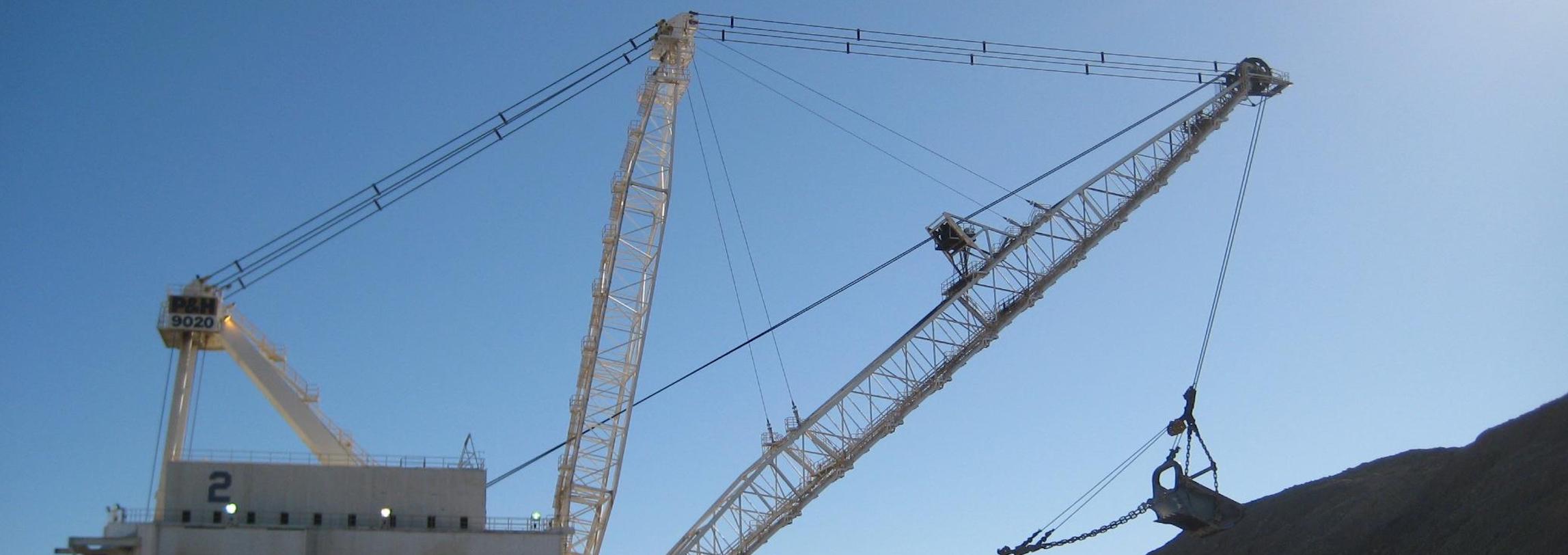ACARP seeks research proposals that address key industry problems on an annual basis. ACARP will fund projects that lead to improvements in safety standards and performance, a reduction in the environmental impacts of mining and coal utilisation, a reduction in the mine operating cost and technical support to marketing of coal.
AMOG were awarded ACARP funding to investigate extending the life of pendant ropes on coal reclaimers by conducting a study into alternative rope materials.
Within the mining industry the predominantly utilised material for pennants and lines is wire rope. Lines include but are not limited to Hoist ropes, Drag ropes, Dump ropes and boom suspension ropes.
While many other industries have found niche uses for the synthetic ropes that are available in the market today, the mining industry faces some different challenges with the integration of synthetic rope technology into the industry.
New synthetic ropes have many properties that could be valuable to the mining industry, especially properties relevant to safety like mass/strength ratio, elasticity, ease of repair, corrosion resistance, weight with respect to handling and, as an end result, cost savings.
The objective of this project was to identify ways to increase productivity and improve safety of draglines. By conducting a study into alternative rope materials AMOG expected to be able to identify any areas of benefit for existing machines and areas of future development for new design machines when using this type of rope.
In order to achieve this objective this study:
- Compared the performance of alternative materials to the wire ropes currently used for boom suspension ropes, drag ropes, dump ropes and hoist ropes, which all have their own differences in loading and performance criteria. The evaluation was transferable to all OEM types of machines.
- Determined the feasibility of the alternatives to the wire ropes currently in use, including possible methods of socketing/terminating appropriate to the application.
- Identified the areas of risk that differentiate the alternative materials from conventional wire, e.g. failure modes, manual handling characteristics, wear, cutting, elasticity, Dynamic Amplification Factor (DAF) reduction etc.
- Determined the feasibility and industry interest in testing of alternative ropes for mining applications. This included stays and hoist ropes on other guyed mining machines, a safe alternative full scale model replicating the likely DAF and operating environments, of machinery while removing the expense and risk associated with working machines and downtime.
The proposed study included the following activities in order to address the objectives:
- Development of a performance measure of wire rope life cycles
- Comparison of alternative materials in the context of wire rope life cycles
- Identification of feasible rope material alternatives that could meet strength, wear, corrosion and fatigue demands
- Perform an FMEA on the samples gathered, categorising failure modes with different life cycles
- Investigation of ways of securing ropes either in sockets for non-metallic materials or using more conventional synthetic rope methods in a practical way for mining applications
- Identifying areas of operation where synthetic rope may be more suitable.
- Approaching identified rope material manufacturers for samples, or input to possible field trial options for synthetic ropes. (First stage field trials were to involve full scale testing, accurately representing a real life installation, with out the safety risks of failure in service)


